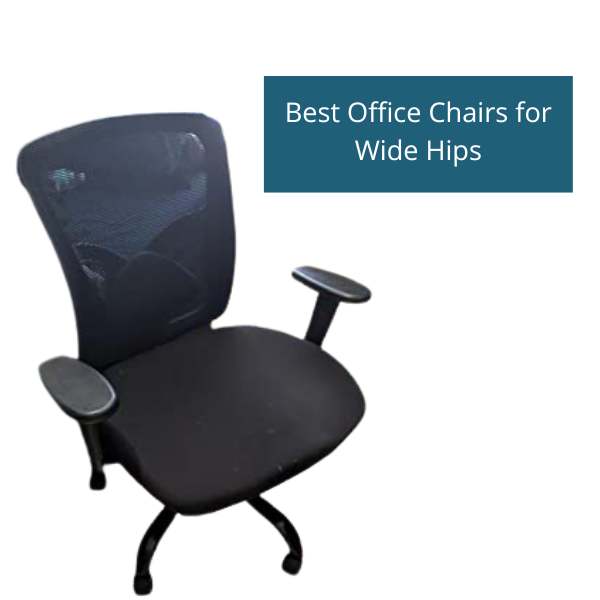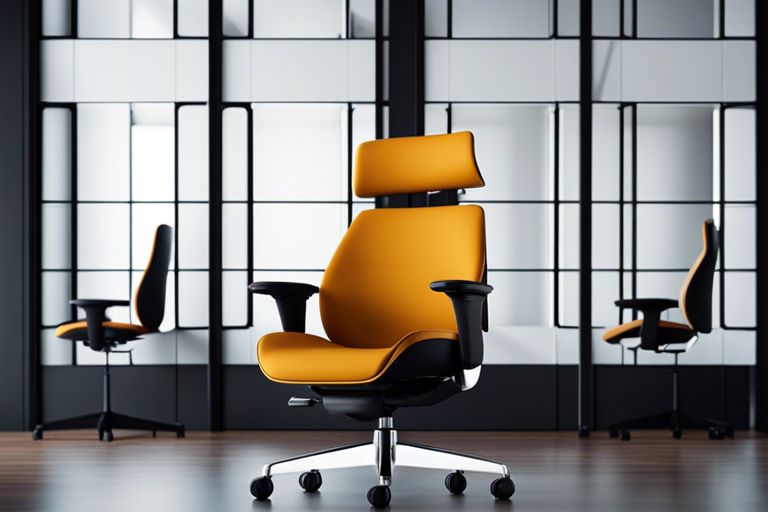Are you tired of feeling uncomfortable and achy after long hours of sitting at your desk? It might be time to consider swapping out your traditional office chair for a kneeling chair. These unique chairs are designed to promote better posture, reduce back pain, and improve overall comfort during long hours of sitting. By positioning your body in a more natural, open-hipped posture, a kneeling chair can help alleviate pressure on your lower back and reduce the risk of developing chronic pain or injury. Additionally, kneeling chairs can strengthen your core muscles and encourage more movement throughout the day, helping to combat the negative health effects of prolonged sitting. If you’re looking for a way to improve your workday comfort and support your long-term health, a kneeling chair could be the solution you’ve been searching for.
Benefits of Using a Kneeling Chair in the Office
The use of a kneeling chair in the office comes with several benefits that can significantly improve your overall well-being and productivity. Let’s take a closer look at some of these benefits.
Improved Posture
One of the key benefits of using a kneeling chair is the improvement in your posture. By placing your body in a more natural, open position, a kneeling chair helps to align your spine, shoulders, and neck properly. This can help in reducing the strain on your back and neck, leading to a better posture over time.
Reduced Back Pain
Using a kneeling chair can also help in reducing back pain. The open hip angle and the gentle forward tilt of the seat promote the natural curve of your lower back, relieving pressure on the spine and reducing lower back discomfort. This can be particularly beneficial for individuals who spend long hours sitting at a desk.
Engaged Core Muscles
When using a kneeling chair, you are more likely to engage your core muscles to maintain an upright position, as opposed to slouching in a traditional office chair. This constant engagement helps to strengthen your core muscles over time, leading to improved stability and balance.
Increased Productivity
By promoting better posture and reducing discomfort, a kneeling chair can contribute to increased productivity. You will likely experience fewer distractions from discomfort and be able to focus better on your tasks, ultimately leading to improved efficiency and output.
Enhanced Circulation
The open hip angle and the lack of a backrest in a kneeling chair can encourage better circulation in your lower body. This can help in preventing the development of issues such as spider veins and swollen ankles that can result from prolonged sitting in a traditional office chair.

Choosing the Right Kneeling Chair for Your Needs
Even though kneeling chairs are designed to promote better posture and reduce back pain, not all chairs are created equal. It’s important to choose the right kneeling chair for your specific needs and body type. Here are some factors to consider when selecting the perfect kneeling chair for your office.
Adjustability
When choosing a kneeling chair, it’s essential to consider the adjustability of the chair. Look for a chair that allows you to adjust the height and angle of the seat and knee pads. This will ensure that you can find the most comfortable and supportive position for your body. Additionally, look for a chair with a sturdy frame and high-quality materials for long-term use.
Comfort and Support
Comfort and support are crucial when selecting a kneeling chair. Look for a chair with ample padding on the seat and knee pads to prevent discomfort during long periods of sitting. Additionally, consider the shape of the seat and the angle of the knee pads to ensure that the chair provides adequate support for your body. You want to feel supported and comfortable throughout the workday.
Durability
When investing in a kneeling chair, you want to ensure that it is built to last. Look for a chair made from high-quality materials such as steel or aluminum for the frame and durable upholstery for the seat and knee pads. A well-built kneeling chair will withstand daily use and provide long-term support for your posture and back health.
Size and Portability
Consider the size and portability of the kneeling chair, especially if you will be moving it between different workstations or offices. Look for a chair that is compact and lightweight, making it easy to transport and store when not in use. Additionally, consider the weight capacity of the chair to ensure that it can accommodate your body size and weight.
Tips for Using a Kneeling Chair Effectively
Keep your posture in mind when using a kneeling chair. Make sure your hips are pushed forward, allowing your back to form a straight line. Place your shins on the lower sloping pad and your knees on the higher pad. Maintain a natural curve in your spine as you sit, and avoid slouching.
- Adjust the chair to fit your body properly.
- Use a footrest if necessary to alleviate pressure on your knees and ankles.
- Assume that 7 Surprising Benefits of a Kneeling Chair.
Proper Sitting Position
When using a kneeling chair, it’s important to maintain a proper sitting position. Make sure your hips are positioned forward, allowing your back to form a natural, straight line. Keep your shoulders relaxed and avoid slouching, to minimize the risk of strain on your back and neck.
Taking Breaks and Stretching
While using a kneeling chair, it’s essential to take regular breaks and incorporate stretching exercises into your routine. Stand up, walk around, and stretch your muscles periodically to prevent stiffness or discomfort. This will help maintain good blood circulation and reduce the risk of muscle tension.
Using Additional Supportive Equipment
In addition to using a kneeling chair, you may benefit from using additional supportive equipment such as a lumbar pillow or ergonomic keyboard and mouse. These accessories can provide extra support to key areas of your body and help improve your overall comfort and posture while working.

Conclusion
On the whole, using a kneeling chair in the office can offer several benefits for you. By promoting better posture, reducing strain on your lower back, and improving circulation, kneeling chairs can help alleviate discomfort and enhance your overall comfort at work. Additionally, the angled seat of a kneeling chair can also help to engage your core muscles and improve your overall posture, leading to long-term benefits for your spinal health. Overall, incorporating a kneeling chair into your office setup can contribute to a better and more comfortable working environment for you.
FAQ
Q: What are the benefits of using a kneeling chair in the office?
A: A kneeling chair can provide several benefits, including improved posture, reduced lower back strain, and increased core strength. By promoting an open hip angle, it encourages a more upright posture, reducing pressure on the lower back and potentially alleviating discomfort associated with prolonged sitting. Additionally, the position engages the core muscles, leading to improved strength and stability over time.
Q: Are there any potential drawbacks to using a kneeling chair?
A: While many individuals find kneeling chairs to be beneficial, some may experience initial discomfort or difficulty adjusting to the new sitting position. It’s important to gradually introduce the chair into your routine and take frequent breaks to prevent any strain or discomfort. Additionally, individuals with certain existing health conditions or injuries may find the kneeling position to be less suitable for their needs.
Q: How can I maximize the benefits of using a kneeling chair in the office?
A: To maximize the benefits of a kneeling chair, it’s important to maintain good sitting habits and posture. This includes adjusting the chair to the appropriate height, ensuring that your knees and hips are at a comfortable angle, and periodically shifting your weight to avoid stiffness. Additionally, incorporating regular stretching and movement breaks into your routine can help prevent stiffness and promote overall comfort and well-being.
- How to choose the right office chair for your body type? - December 19, 2023
- What are the best ergonomic features to look for in an office chair? - December 18, 2023
- Is sitting on an exercise ball an effective alternative to a traditional office chair? - December 15, 2023





